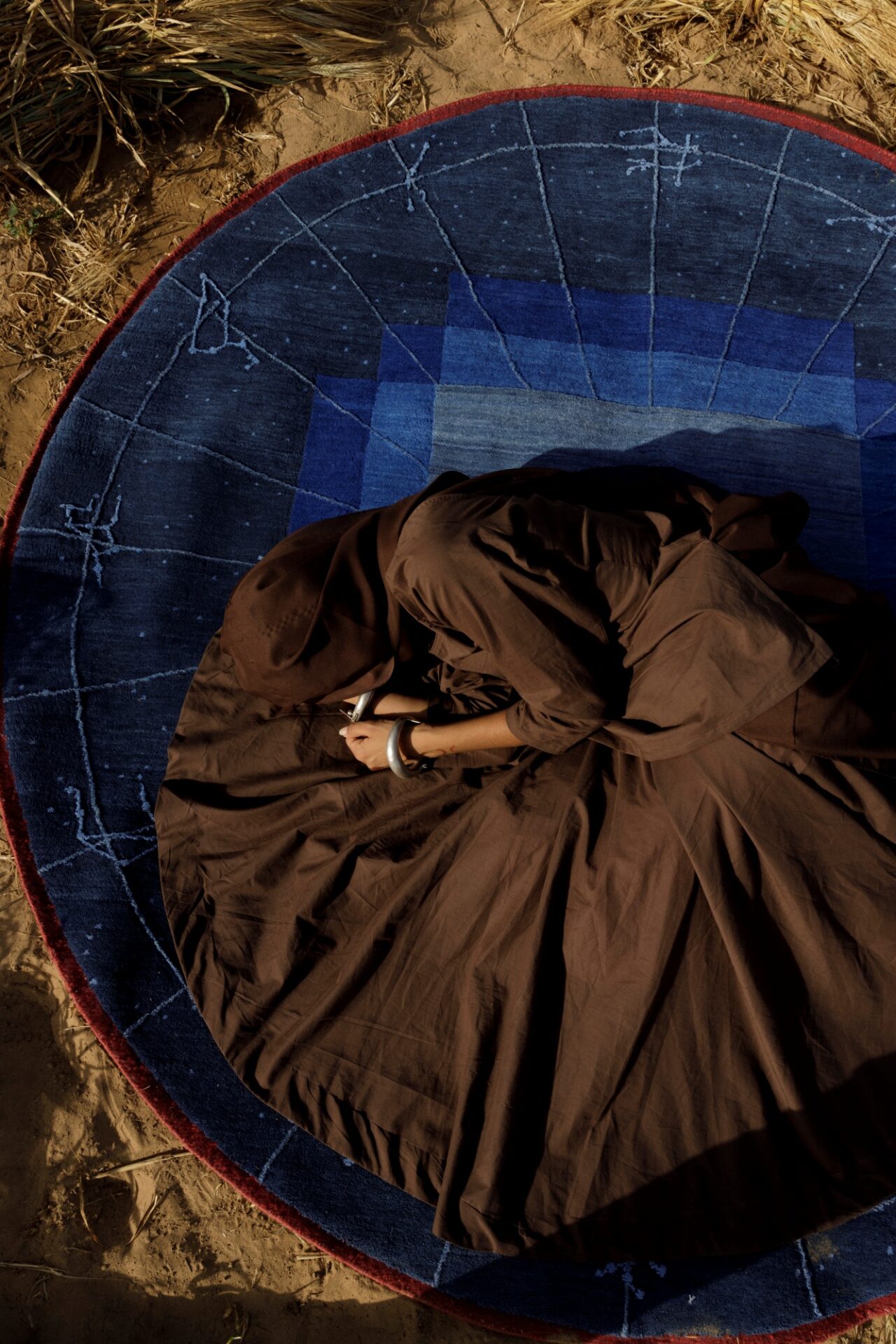Rugs Inspired by Cosmic Energy
Drawing on the essence of cosmic energy translated from watercolour canvas, designer Ashiesh Shah in collaboration with Jaipur Rugs launched ‘Brahmaand’ collection at the Salone Milano.

Yogesh Choudary, Director Jaipur Rugs with the creator of Brahmanand collection, Ashiesh Shah, a designer who stays true to the Japanese philosophy of Wabi Sabi.
Participating at the Salone Milano and also opening a new showroom in the design capital of the world — Milan, Jaipur Rugs made a global impact not just through their designs, which was stunning, but through their strong foothold on traditional hand-knotting techniques and the social commitment of the family-owned business of not just providing livelihoods but also trying to keep the art of rug weaving alive. Jaipur Foundation not only provides livelihood to rural communities, it is now aiding to revive the 2,500-year-old rug weaving artistry and providing opportunities to artisans to shine in their own glory.
At the Design Week, Jaipur Rugs also launched a stunning series of collection in collaboration with designer Ashiesh Shah. Meditative and deep blue, the new collection had a disquietening effect on onlookers as they passed through the Jaipur Ruga stall at the Salone. ‘Brahmaand’ was inspired by a series of original watercolour paintings by Shah. The collection uses humankind’s ceaseless search for cosmic relevance and age-old questions of greater designs into thought-provoking visual art with an inventive line of luxurious hand-knotted carpets. Channelling cosmic energy, the ‘Brahmaand’ collection, dyed in hues of deep indigo is an exploration of visual dimension through gradient, texture and handmade perfection. Hanging in one of the most crowded open exhibition spaces, Brahmaand attracted visitors with its mesmerising deep hues of indigo and the subtle weaves of dignified workmanship.
 Shah, an architect and a celebrity interior designer with a long list of completed works of A-listers and Bollywood stars, is known for his eclectic contemporary designs. And it was from Shah’s meditative watercolour paintings that Brahmaand took its wings from.
Shah, an architect and a celebrity interior designer with a long list of completed works of A-listers and Bollywood stars, is known for his eclectic contemporary designs. And it was from Shah’s meditative watercolour paintings that Brahmaand took its wings from.
While the watercolours by Shah, were the initial inspiration, the rugs also drew inspiration from the ancient geometry of India, the cosmos and the architecture of the ‘Jantar Mantar’ thus explaining the organic nature of the rugs.
Speaking about the collection, Shah, says, “Over the course of two years, a series of watercolour paintings developed through the lockdown. And this laid the foundation for my very first collection in collaboration with Jaipur Rugs. Drawing from the essence of the cosmos, ‘Brahmaand’ captures the mysteries of starlit night skies serving as a physical manifestation of elements from the universe. It has been a process of meditation and reflection weaving our visions and design ideologies through this collection, a celebration of fine craftsmanship, collaboration and conversation.”
 Capturing the mysteries of starlit night skies through its soft silhouettes, these effortless contemporary rugs draw inspiration from ancient Indian science and mysticism.
Capturing the mysteries of starlit night skies through its soft silhouettes, these effortless contemporary rugs draw inspiration from ancient Indian science and mysticism.
Though the rugs seem to be a simple manifestation of the painting, the process involved to arrive at the final product are a result of an elaborate and meticulous series of processes. From its picking, hand-carding, and spinning of wool into fine yarn to a series of extensive finishing processes, they exemplify the transient craft of weaving through its unparalleled artisanship, Shah shares.
 Precise ‘gultarashi’ moulds the rug pile like troughs and crests of space-time, while timeless motifs and constellations crafted with intricate weaving and ‘zardosi’ embroidery illustrate discourses of being and non-being, illusion and reality; while beckoning to a world far out of our reach.
Precise ‘gultarashi’ moulds the rug pile like troughs and crests of space-time, while timeless motifs and constellations crafted with intricate weaving and ‘zardosi’ embroidery illustrate discourses of being and non-being, illusion and reality; while beckoning to a world far out of our reach.
The collection comes in a range of various celestial elements, ‘Nakshatra, that carries the mysteries of a starlit sky, Manthan that celebrates craftsmanship, Dwaar exemplifies the essence of the cosmos, and Chanda, which touches on the fluidity of the moon,






